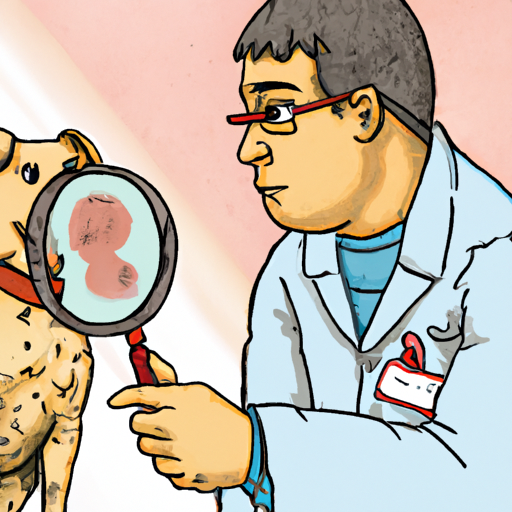As a caregiver, you’re entrusted with the well-being of your furry friend. This responsibility is both a privilege and a challenge, especially when it comes to identifying serious health issues like cancer. This guide is here to help you understand the process of diagnosing cancer in dogs.
H2: Understanding The Basics of Canine Cancer
Cancer in dogs, much like in humans, is a disease caused by abnormal cell growth that spreads throughout the body. This uncontrolled growth can occur in any part of your dog’s body, resulting in a wide range of symptoms.
There are various types of canine cancer, including:
- Lymphoma: Affects the lymphatic system
- Osteosarcoma: Bone cancer
- Mast cell tumors: Skin cancer
- Hemangiosarcoma: Cancer of the blood vessels
H2: Recognizing Early Signs
Early detection is crucial in managing and treating your dog’s cancer. Here are some signs to watch out for:
- Abnormal swellings that persist or continue to grow
- Sores that do not heal
- Weight loss
- Loss of appetite
- Bleeding or discharge from any body opening
- Offensive odor
- Difficulty eating or swallowing
- Hesitation to exercise or loss of stamina
Remember, these signs can also indicate other health issues, so consult with a veterinarian for a proper diagnosis.
H2: The Diagnostic Process
The diagnostic process often begins with a thorough physical examination, followed by a series of tests.
| Test | Description |
|---|---|
| Blood Test | Analyzes red and white blood cell counts, platelets, and other parameters. |
| Urinalysis | Assesses kidney function and urinary tract health. |
| Biopsy | Involves taking a sample of the tumor for examination. |
| Imaging | X-rays, ultrasounds, or MRIs to visualize tumors. |
H2: Treatment Options and Care
Once a diagnosis is confirmed, treatment options can include:
- Surgery
- Radiation therapy
- Chemotherapy
- Immunotherapy
The chosen treatment will depend on the type, stage, and location of the cancer, as well as your dog’s overall health. As a caregiver, it’s essential to ensure your dog is comfortable and stress-free during this difficult time.
H2: Preventive Measures
While cancer can’t always be prevented, you can take certain steps to reduce your dog’s risk:
- Regular vet check-ups
- Healthy diet
- Regular exercise
- Avoidance of known carcinogens (like secondhand smoke)
FAQ
Q: Is cancer common in dogs?
– A: Yes, cancer is a leading cause of death in older dogs.
Q: Can a dog live with cancer?
– A: Many dogs live a quality life with cancer with the right treatment and care.
Q: How is canine cancer treated?
– A: Treatment can include surgery, chemotherapy, radiation, and immunotherapy.
Q: Can I prevent my dog from getting cancer?
– A: While there’s no guaranteed way to prevent cancer, regular vet check-ups and a healthy lifestyle can help reduce the risk.
Remember, as a caregiver, you are the first line of defense in your pet’s health. Stay vigilant, seek veterinary advice when in doubt, and above all, provide plenty of love and comfort.



